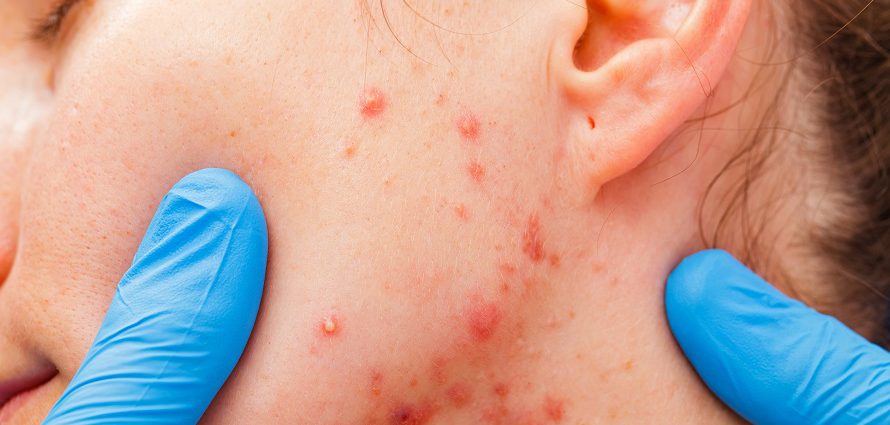The Ultimate Acne Treatment Guide

Approximately 40 to 50 million Americans have acne at any one time, according to statistics from the American Academy of Dermatology. And we are not just talking about teens, either. Many adults also develop acne, some for the first time ever in their 30s, 40s and beyond.
That’s the bad news. The good news is that there are more treatments available today to clear up your skin for good. Here, the Consumer Guide to Plastic surgery breaks down the top acne breakout treatments for you.
Try This at Home
If you are breaking out, the first thing to try is a salicylic acid cleanser followed by a benzoyl peroxide leave-on product to help dry the skin. There are a variety of over-the-counter brands of each to choose from.
Before adopting a daily use regimen, it is wise to perform a test run first, as the FDA recently warned that products with these active ingredients can cause severe irritation or even potentially life-threatening allergic reactions. Assuming you don’t have a bad reaction, give the products a few weeks to work. If you are not happy with the results, schedule an appointment with your dermatologist to see what else is available to help improve your complexion.
Check In With Your Dermatologist
Acne can look like other skin diseases such as rosacea. Your skin doctor will be able to tell you what is causing your blemishes. If it is acne, he or she may suggest topical treatments such as retinoid creams and gels. When used consistently, they can clear up acne and prevent it from coming back.
Other options may include oral antibiotics, which are usually taken for a short period of time to reduce the bacteria that contribute to acne and reduce the inflammation and redness. Birth control pills may help women whose acne tends to mimic the ebb and flow of hormones during their menstrual cycle, says Joshua Zeichner, MD, the Director of Cosmetic and Clinical Research in the Dermatology Department at Mt. Sinai Hospital in New York City. “Widespread angry pimples may require a medication like an antibiotic by mouth which can help calm a flare within a week or two. However, it takes several weeks for significant clearing,” says Dr. Zeichner.
Other Rx Acne Options
If acne is severe and other treatments have failed, isotretinoin — brand names include Roaccutane (formerly known as Accutane) and Claravis — can be considered.
Sometimes your dermatologist may suggest a cortisone or steroid shot to clear up an inflamed acne cyst. Steroid injections can do the trick if you have a big zit before a big event — say a prom, wedding or hot date. In a pinch, these shots reduce swelling, promote healing and prevent scarring. “The key to treating severe acne is to get it under control as quickly as possible to prevent the development of scarring,” Dr. Zeichner says.
Caution: Isotretinoin should not be used by women who are, or plan to become, pregnant. There is a high risk of birth defects.
Chemical Peels
There are several at-home and in-office treatments that may help treat acne when used in combination with oral and topical medications. For example, Dr. Zeichner says “salicylic acid peels can help bring acne under control by exfoliating skin cells that block pores and by removing excess oil.” The peels are a power-punched version of topical salicylic acid washes and peels, using much higher concentrations of the ingredient. These peels dry skin out and help speed up the duration of red angry pimples. A series of peels is often needed.
Read more about chemical peels
Microdermabrasion
Microdermabrasion, a procedure that involves spraying tiny crystals across the skin to get rid of its top layer, can also help control acne. “It can remove dead skin cells that accumulate on the skin’s surface and help other acne-fighting medications penetrate better into the skin,” Dr. Zeichner explains. A series of microdermabrasion sessions is often needed to see meaningful results.
Read more about microdermabrasion
Blue Light Therapy
There has been a lot of buzz about photodynamic blue light therapy (PDT) being used to treat acne and other skin conditions in recent years. During this procedure, a special light-sensitive medication called aminolevulinic Acid (ALA) is spread on the skin, and a specific blue light is then directly applied, prompt the selective destruction of targeted cells. “Blue light can be used as an adjunct therapy along with other topical or oral medications, or in people who cannot tolerate other therapies,” Dr. Zeichner says.
Lasers and Energy-based Acne Treatments
Some laser therapies work by destroying the bacteria that cause acne. Radiofrequency energy delivers intense heat deep into the skin in order to reduce the size of oil glands associated with acne. Intense pulsed light (IPL) also may help treat acne by targeting acne-causing bacteria and shrinking sebaceous or oil-producing glands. IPL can be combined with a gentle vacuum (photopneumatic therapy). Some lasers can also help treat acne scars.


